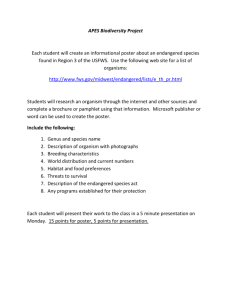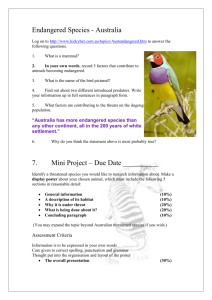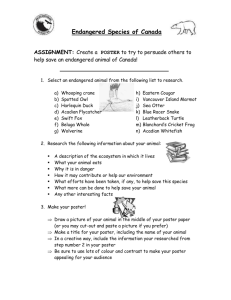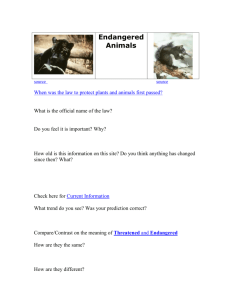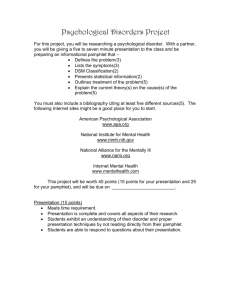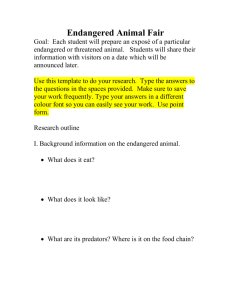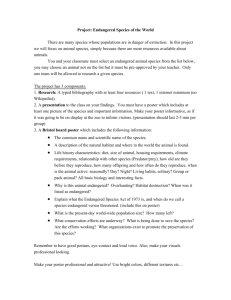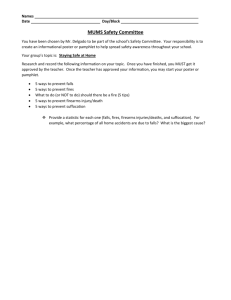World Wildlife Federation Research Project Performance Based
advertisement
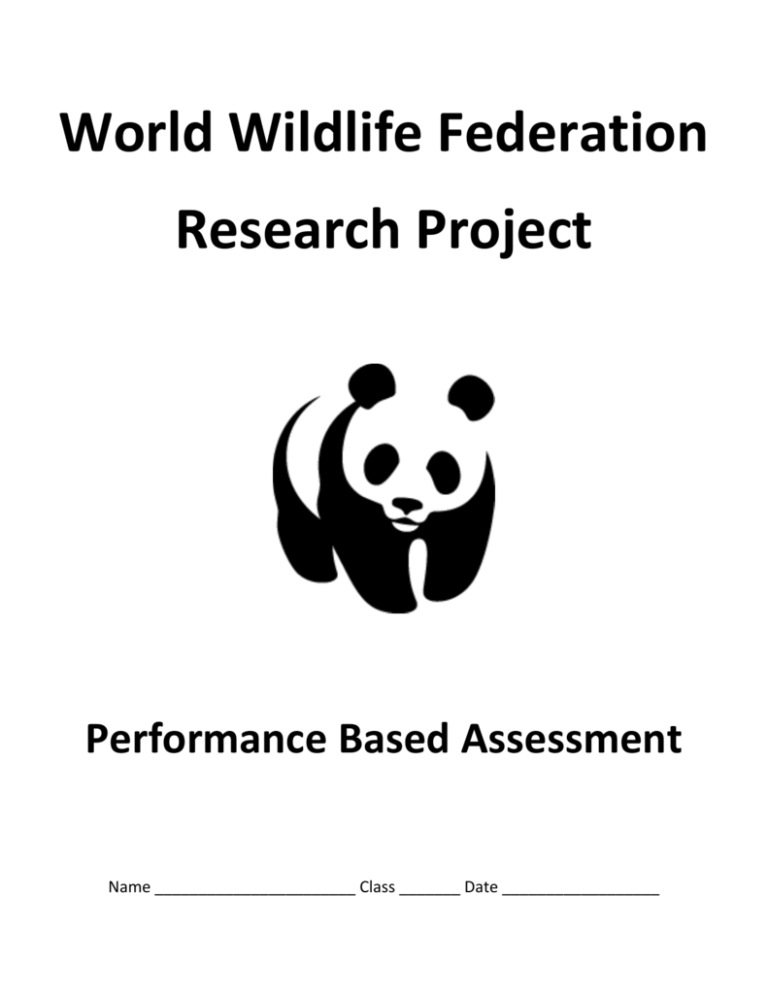
World Wildlife Federation Research Project Performance Based Assessment Name _______________________ Class _______ Date __________________ Unit One Interactions and Ecosystems Project Scenario: You are an ecologist who has been selected by the World Wildlife Federation to be a volunteer. Your job is to create a presentation that enhances public awareness on an extirpated, endangered, or threatened animal species (not extinct). You are to use both visuals and written word. As a volunteer you will be expected to present your information to classrooms throughout Canada to share your knowledge of the extirpated, endangered or threatened species. Format Options: You may create a poster to present for grade 5 students. You may create a professional pamphlet for grade 8 students. (Technology is required for this project.) You may also create a story book for grade 2 students. Please receive approval from your teacher regarding the format of your presentation. Criteria: Each of you will research a different animal species. You should choose an extirpated, endangered or threatened species found in Canada. You have the option of choosing a species outside of Canada, but you will need teacher approval for your choice. It is necessary that you show your research plan and resources to your science teacher. Resources: Use the following resources to find information about your species: internet, books, encyclopedias, magazines, newspapers, textbooks, community experts ** Keep track of all sources of information as you must include a bibliography of your research. You must use a minimum of three sources of information. All research MUST be written in your own words. Remember, you are creating a poster, a pamphlet or a book that will be presented to grade 2, 5, or 8 students. Plagiarism (cutting and pasting from in the internet/copying text) WILL NOT BE tolerated or acceptable. A Few Suggested Information Sites: www.hww.ca www.naturecanada.ca www.advocateswest.org http://www.sararegistry.gc.ca/default_e.cfm Research: The following information needs to be included on your poster or pamphlet: The following information needs to be integrated onto your poster or pamphlet: 1. Animal Description and Adaptations - Physical characteristics - Structural adaptations - Behavioral adaptations 2. Basic Needs: Refer Biotic and Abiotic Components of an Ecosystem – Energy/Food – Habitat – Water – Exchange of Gases 3. Interdependencies - Symbiotic Relationships: Commensalism, Mutualism and Parasitism 4. Nutrient Cycles - Niche (role) of the organism in the environment (producer, consumer, decomposer) - Create food chain and/or food web and/or pyramid of numbers - What is your organism’s placement in a food web 5. Cycles in the Environment - Water Cycle, Carbon Cycle and Other Cycles 6. Species Distribution - How many are in existence – increasing or decreasing? - Reproduction and Life Span - endangered, threatened, vulnerable, extirpated 7. Causes of Change in the Ecosystem - Primary succession - Secondary succession - Competition - Predation - Disease - Climate, Weather, Fires 8. Human Impacts on Ecosystems - Human actions - agents of change (intended, unintended) - Hunting, poaching, recreation areas, deforestation, fires, - Bioaccumulation of pollutants in the environment i.e. factories, - human population explosion; ecological footprint - Bio-invasion 9. Current and Future Work - How is your species being protected? - Explain any wildlife management plans or law enforcement. - What organizations are formed to help? i.e. Canadian Wildlife Federation - How has/can the government help? i.e. World Treaties, Education - Use of indicator species and other monitoring systems - How can you help? Step by Step Creation Process: 1) 2) 3) 4) 5) 6) 7) 8) 9) Choose an organism. Receive teacher approval . Research your species using the suggested resources and any others. Write down your research resources – where did you get your information? Outline your research under specific headings. Write a rough draft. Show your rough draft to your teacher BEFORE you begin your good copy. Edit your work. Decide on how you will present your information on your poster or pamphlet – create a plan that includes written and visual presentation. 10) Remember a title. 11) Think about where you will incorporate pictures, diagrams and sketches on your poster or pamphlet. 12) Do all drawings in pencil – use pencil crayons for coloring and markers may be used for outlining. Evaluation: You will be evaluated based upon the following rubric (skill and knowledge).
